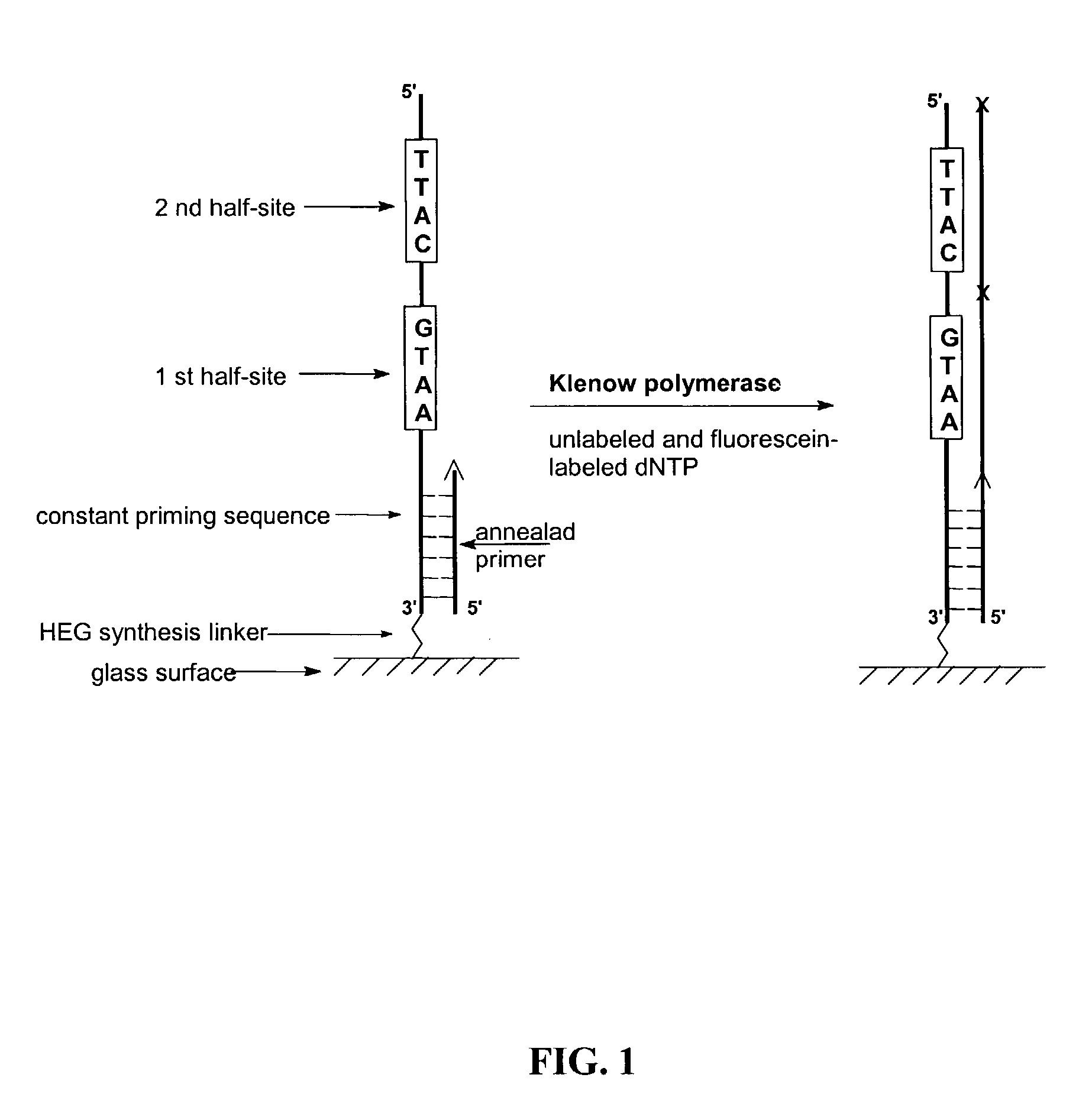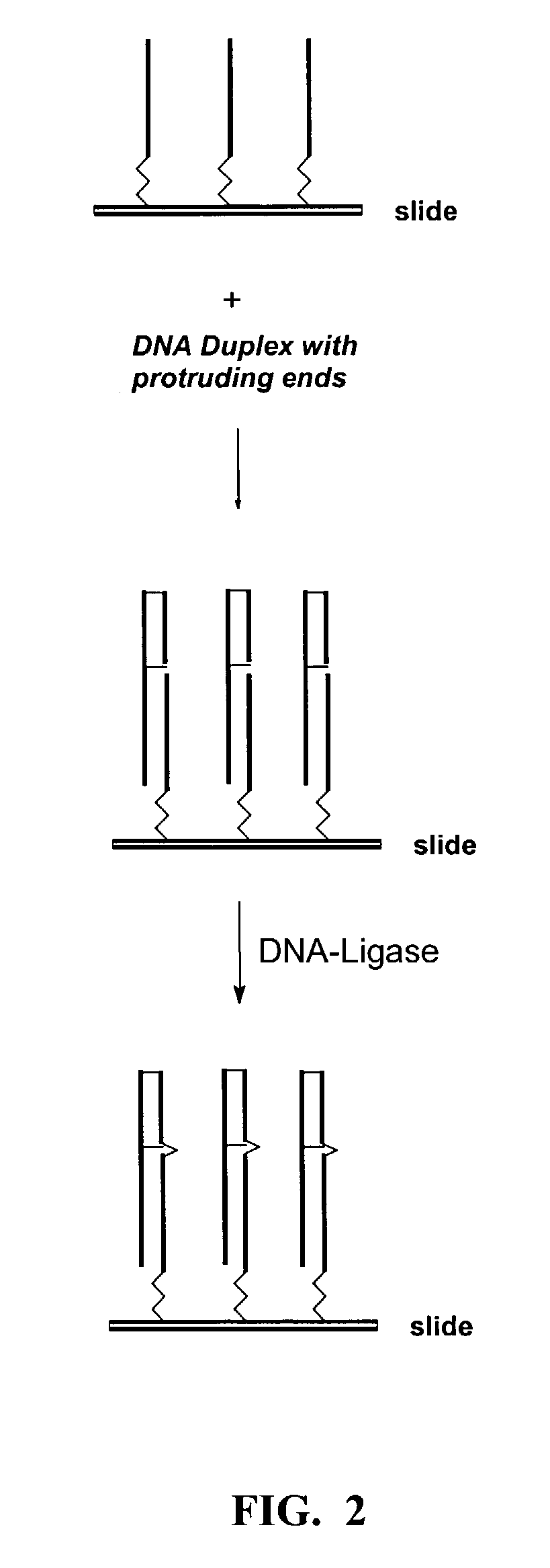Double stranded nucleic acid biochips
a nucleic acid biochip and double strand technology, applied in the field of double stranded nucleic acid molecules, can solve the problems of low efficiency of dna microarray synthesis, inability to serve many important molecular biology investigations, and high cost of synthesis method, so as to facilitate the incorporation of more dna duplexes
- Summary
- Abstract
- Description
- Claims
- Application Information
AI Technical Summary
Benefits of technology
Problems solved by technology
Method used
Image
Examples
Embodiment Construction
[0080]The present invention is directed to novel methods and compositions to create and use double stranded DNA microarrays (biochips). dsRNA or RNA / DNA duplexes can be made similarly. Methods are based on use of synthesized DNA duplexes in which complementary chains are covalently bonded by a novel connector including a linker for attachment to a support (matrix). A range of suitable oligonucleotide lengths attached to the connector includes:[0081]about 10–40 base pairs—for synthesized dsDNA probes; and[0082]up to about 400 base pairs—for natural dsDNA fragments.
[0083]Natural DNA fragments can be obtained from commercial sources or isolated by methods known to those of skill in the art. These can be longer than DNA made synthetically because of technical restrictions on the latter.
[0084]The present invention is a new and promising tool for many molecular biological investigations based on DNA-protein interactions, and can also be used for creation of new formats of microarrays incl...
PUM
| Property | Measurement | Unit |
|---|---|---|
| volume | aaaaa | aaaaa |
| nucleic acid | aaaaa | aaaaa |
| nucleic acid-protein interactions | aaaaa | aaaaa |
Abstract
Description
Claims
Application Information
 Login to View More
Login to View More - R&D
- Intellectual Property
- Life Sciences
- Materials
- Tech Scout
- Unparalleled Data Quality
- Higher Quality Content
- 60% Fewer Hallucinations
Browse by: Latest US Patents, China's latest patents, Technical Efficacy Thesaurus, Application Domain, Technology Topic, Popular Technical Reports.
© 2025 PatSnap. All rights reserved.Legal|Privacy policy|Modern Slavery Act Transparency Statement|Sitemap|About US| Contact US: help@patsnap.com



